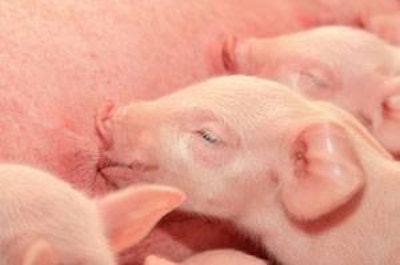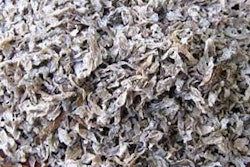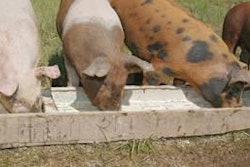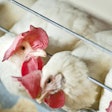
The process of metabolizing nutrients invariably leads to the production of undesirable compounds, among which and perhaps the most dangerous, are those called free-radicals. These chemical compounds “steal” electrons from nearby molecules, harming cells through long-term irreparable damage. It has been shown that cellular membranes and DNA are particularly vulnerable to free radical damage, and this can lead to severe neurological damage and genetic malfunction. It is believed that aging is due (at least partly) to the natural decline in controlling free-radical damage. In human nutrition and health, antioxidant nutrition remains a hot-debate field.
It is not like the organism is defenseless against free-radicals. In fact, the organism contains a great number of defense mechanisms against free-radicals, among which are molecules such as superoxide dismutase, glutathione peroxidase, and Q10. What these molecules do is simply donate electrons to scavenging free-radicals, rendering them virtually harmless. Here it should be noted that there are countless molecules that can donate electrons, but such dedicated metabolic “antioxidants” as the ones mentioned above are specific for certain processes working with greater efficacy and specificity—and they spare all other molecules required for other purposes. The need for a great number of dedicated antioxidants is due to the fact that antioxidants are not interchangeable; this applies to those provided through feed ingredients.
Antioxidants in nature
Nature has ensured that animals receive a good amount of extra antioxidants daily through their feed. Such antioxidants include familiar names, such as vitamin C, vitamin E, and selenium. But, there are more not so well-known antioxidants. These include beta-carotene, which is among the most easily recognizable carotenoids. The antioxidant role of beta-carotene is only now being understood in depth.
In addition, there are obscure antioxidants belonging to the families of flavonoids and tannins, which abound in seeds and fruits, and they are known only due to recently having been available as feed additives. Clearly, there are no lack of antioxidants when it comes to nature, which is something that should illustrate their importance in sustaining life in all living organisms, and also their lack of interchangeability—something that could help reduce the confusion in interpreting the results of many experimental studies.
Impact of free-radicals
Unlike the case with most pathogenic microorganisms and high concentrations of most toxins, the damaging effect of free-radicals is neither acute nor immediate. It is a slow but steady long-term process that requires the build up of damaging effects before health starts to deteriorate and certain organs or tissues begin to malfunction. Or, as is quite usual in the case of the immune system, the effects from excessive free-radical exposure do not become apparent before the organism is stressed, like during a disease outbreak. Perhaps this problem in assessing the true extent of pre-existing free-radical damage has created some disappointment when it comes to controlling it mainly through dietary supplementation with natural antioxidants.
It is of benefit to stop here and note that currently there is no accurate and practical assay to quantify the extent of free-radical damage in domestic animals. Likewise, there is no quantification of antioxidant requirements based on species, age, condition or health. So far, all attempts toward supportive antioxidant nutrition have been on a qualitative-empirical basis, with highly variable results. Thus, there is a good number of peer-reviewed published research reports in which the positive effects of certain antioxidants is clearly illustrated; such is the case with vitamins C and E, and of course, with organic selenium. At the same time, there is an equal number of similar reports for the same antioxidants where such effects were not observed.
When antioxidants are needed
Perhaps the confusion is in the difficulty of identifying conditions under which animals have increased need for antioxidants and connecting this need, not only with the correct dosage of a supplemental antioxidant, but also with the correct form of the available antioxidants.
Here, the case of vitamin C will serve to illustrate the difficulty in assessing the need for supplemental antioxidants. Early research in the 1980s demonstrated that although pigs normally synthesize enough vitamin C, under the rigors of weaning, stress supplemental doses of up to 1,000 ppm could enhance growth performance. Such effects, however, were not observed constantly in subsequent studies, whereas enough positive response was obtained with only 100-200 ppm in other studies. Clearly, some pigs did benefit from supplemental vitamin C, but it remains unclear why and under which conditions.
Organic selenium
Of course, the same confusion exists today with organic selenium. There is no doubt that pigs receiving diets with cereals grown in areas with soils deficient in selenium cannot receive enough selenium through their feed unless the current maximal inclusion level is raised from around 0.3 ppm to above 0.5 ppm. Where this is impossible due to legislation, the use of organic selenium, which is more bio-available than inorganic forms, can help solve this problem.
Likewise, there is little doubt that sow’s milk contains less and less selenium as the sow ages, affecting the amount of selenium reaching the piglets. In this case, feeding the sow long-term with diets containing organic selenium has been shown to maintain milk selenium levels through several parities, as organic selenium is deposited in muscles from where it is released due to normal recycling of body proteins. Despite the sound theoretical basis, practical research and experience does not provide enough evidence for a “blanket” application of organic selenium.
Perhaps the answer is found in the case of vitamin E, which for some practitioners is akin to a last resort solution for many difficult disease cases. Today, there are a great number of veterinarians and nutritionists that recommend extremely high doses of vitamin E when animals are under any form of stress. Such cases will be, of course, that of a persistent disease that does not retreat despite common cure practices, or during very early weaning. Naturally, animals do not require high levels of vitamin E when raised under normal conditions. But, an unexpected stress perhaps raises their need for supplemental antioxidants. Interestingly, heat stress is commonly addressed using high levels of dietary vitamin C—something that further illustrates the point that not all antioxidants are equal, albeit rather useful when used correctly.
The role of stress
Apparently, the response to antioxidants is related to their quantitative requirement, which appears to increase during conditions of stress. It is unclear whether this is due mainly to a reduced efficacy of internal antioxidant systems or due to an increased production of free-radicals. As is the case for more natural systems, it is perhaps a combination of both causes, complicated by the nature of the stress factor—not to mention other complicating factors such as animal base health, condition, age, productivity and genetics.
Today, there is considerable debate among nutritionists whether super-intensive productivity, which requires an increased feed intake and enhanced nutrient metabolism, causes oxidative stress in modern animals. The debate is not whether increased metabolism results in higher generation of free-radicals; this cannot be denied. Rather, the debate is whether this unavoidable increase in free radical production can cause enough oxidative stress to affect animal productivity and health.
Naturally, the notion that super-intensive productivity is accompanied by a damaging oxidative stress requires no further explanation. It is interesting, however, to briefly present some counterarguments that might help explain why in some research reports antioxidant supplements appear to be of little benefit. First, young animals are more resistant to oxidative stress compared to older animals that suffer from age-related reduction of efficacy in all systems. Second, certain animals that experience super-intensive growth patterns, such as broilers, have limited lifespan (42 days in the case of broilers). As mentioned above, the damaging effects of free-radicals require time to fully manifest. Third, with a higher feed intake there is a higher intake of natural antioxidants, already present in most feed ingredients. Fourth, commercial feeds already contain enough safety margins for the most common antioxidants, such as vitamin E and selenium.
Using antioxidants as a tool
Perhaps, the truth is somewhere in the middle: nutritional oxidative stress can have a considerable negative impact only when combined with other stress factors. Such examples include early-weaned pigs, crowded broilers, layers with cage-fatigue syndrome or liver failure problems, sows with consistently high litter sizes, and of course, as mentioned above, disease and heat stress.
Clearly, this is a perplexing issue and one that continues to puzzle researchers and field personnel. There are clearly more questions than answers. It is quite early to pretend we know how to address the interesting topic of antioxidant nutrition under current commercial practices. For the time being, it is best to use supplemental antioxidants as one more tool in addressing difficult situations with the understanding that it remains a case of trial and error.













